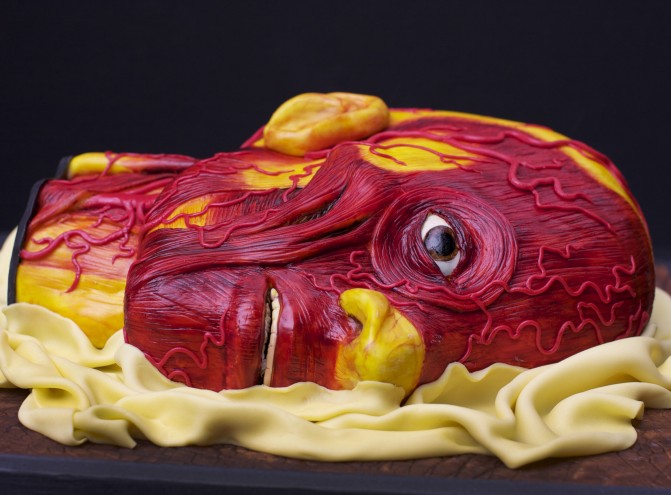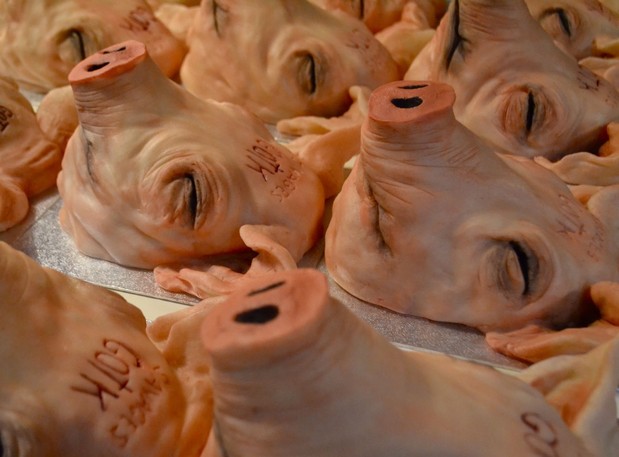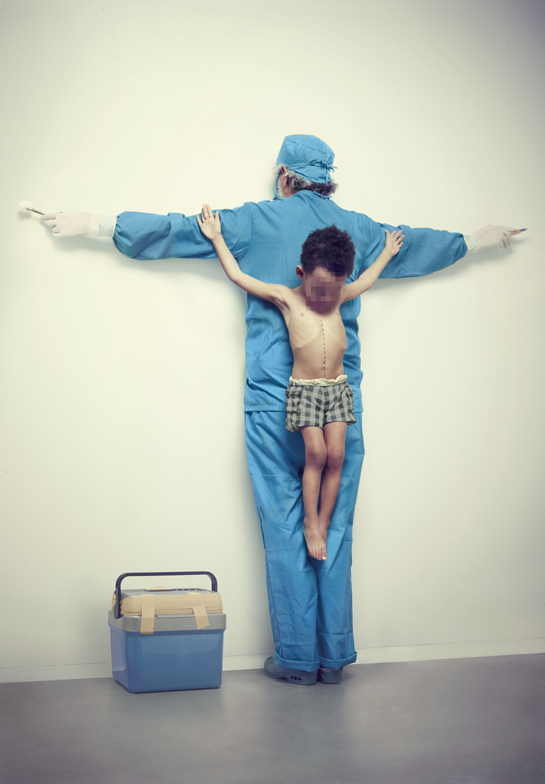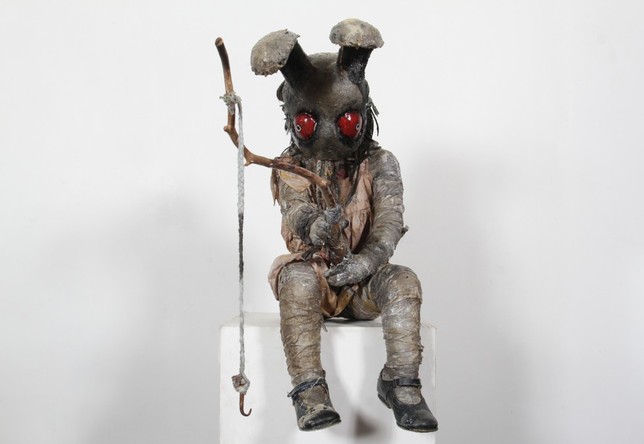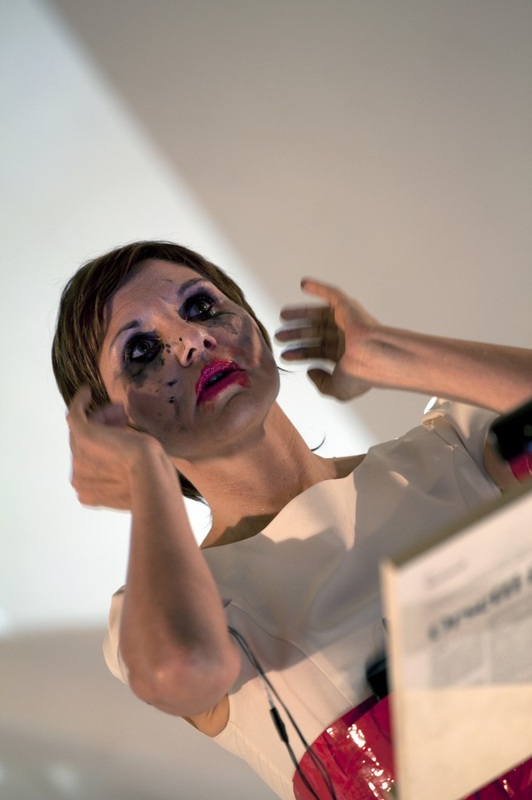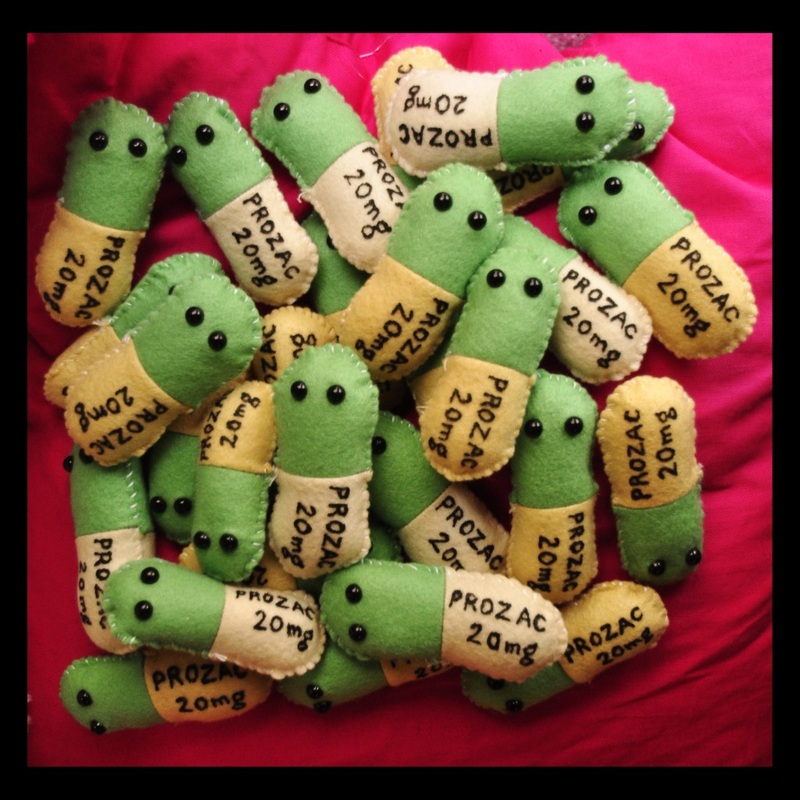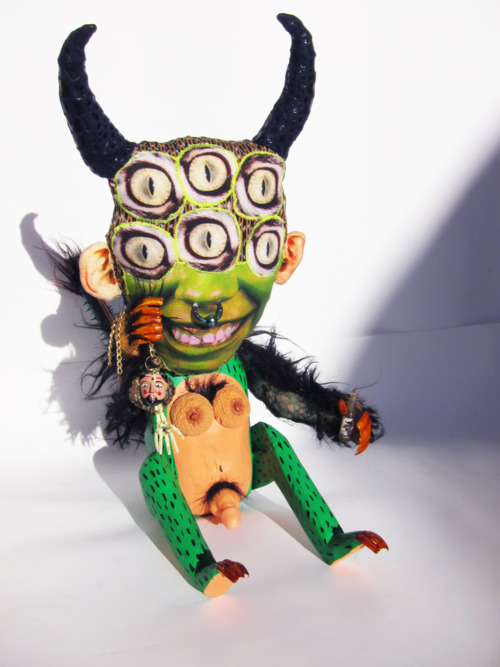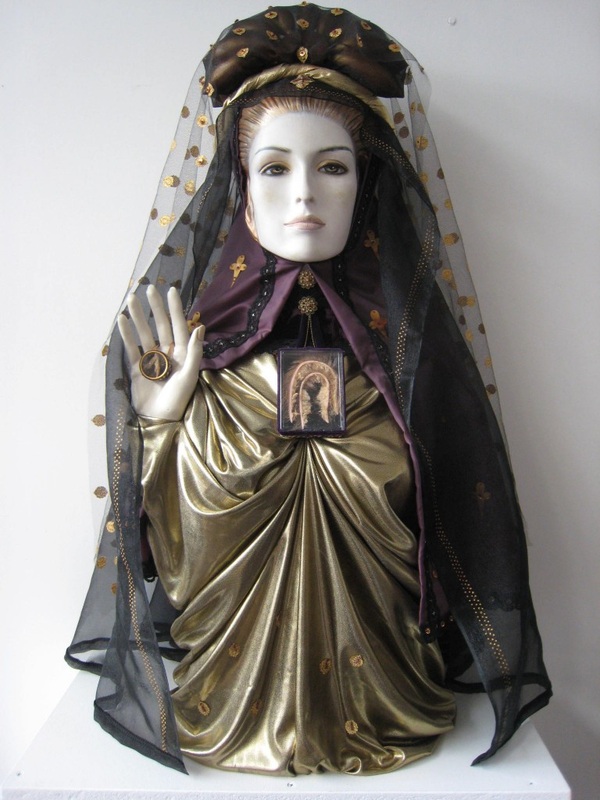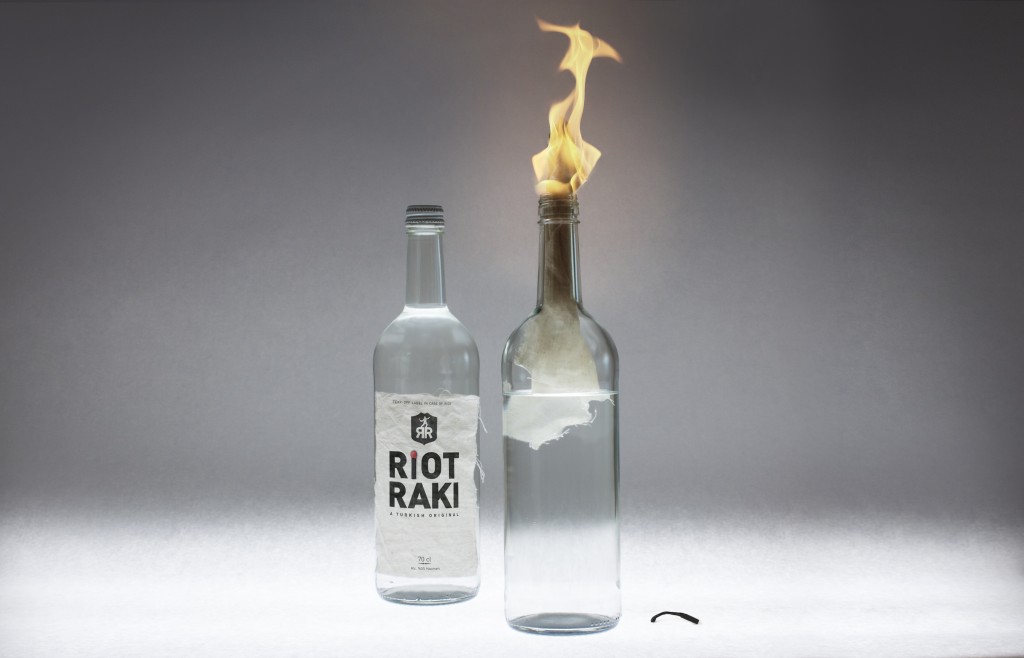SPINDLE MAGAZINE | INTERVIEW: CURATOR JAMES ELPHICK OF MODERN PANIC
By Spindle on 7 November, 2013
As Modern Panic prepares to open its doors to the public this Saturday 9th November, we catch up with controversial curator James Elphick to discuss the ideas behind one of London’s most outrageous displays of art.
What in particular appeals to you about art curation?
The art world is a very select scene. As a daring young curator I want to bring new, exciting, meaningful and thought provoking work to the attention of the public and to make art accessible, affordable and thrilling to see. Many commercial galleries take advantage of young artists and it’s not conducive to helping artists develop and flourish. I provide a platform with Modern Panic to support and showcase the work of new artists alongside the established internationally renowned. I provide each with unrivalled artistic opportunities to open their work to new audiences.
What can visitors expect to see from the fourth installment of the Modern Panic exhibition that will be different from the last three?
Each exhibition features new artists and new work. No Modern Panic show is the same. You can expect to see a bombardment of art designed to make you push you out of your comfortable zone.
As Modern Panic prepares to open its doors to the public this Saturday 9th November, we catch up with controversial curator James Elphick to discuss the ideas behind one of London’s most outrageous displays of art.
What in particular appeals to you about art curation?
The art world is a very select scene. As a daring young curator I want to bring new, exciting, meaningful and thought provoking work to the attention of the public and to make art accessible, affordable and thrilling to see. Many commercial galleries take advantage of young artists and it’s not conducive to helping artists develop and flourish. I provide a platform with Modern Panic to support and showcase the work of new artists alongside the established internationally renowned. I provide each with unrivalled artistic opportunities to open their work to new audiences.
What can visitors expect to see from the fourth installment of the Modern Panic exhibition that will be different from the last three?
Each exhibition features new artists and new work. No Modern Panic show is the same. You can expect to see a bombardment of art designed to make you push you out of your comfortable zone.
How did the name ‘Modern Panic’ come about?
Modern Panic has its roots in the 1960s Parisian Panic Movement; a loose group who concentrated on chaotic happenings containing performance art and surreal imagery designed to be shocking and a response to surrealism becoming petite bourgeoisie. It releases destructive energies in search of peace and beauty. In 2009 I exhibited the founding fathers of the movement alongside the new wave of panic artists and from that sprung Modern Panic, an ongoing series of modern provocative artists.
What qualities in each of the artists were you searching for through the selection process?
As a curator it’s very difficult to select the work as it’s not just what speaks to me, it’s what might speak to you. Everyone has a very diverse and different opinion on what is deemed good or bad art. I like this unbalanced view and try to push it to its extreme. I want the audience divided and unsure, to love one thing and hate another, for them to discover the limits of themselves in what they think is acceptable and not.
What are the standout pieces for you?
Erik Ravelo’s ‘Los Intocables’ series has already divided half the internet and been banned on social media countless times. Paul Toupet’s masked mummified sculptures are beautiful works of art and it’s an honour to premier his work in London. There are so many artists to choose from it’s difficult to select stand out pieces. I really urge you to come and see for yourself and select your own favourites and the ones you loathe!
Modern Panic has its roots in the 1960s Parisian Panic Movement; a loose group who concentrated on chaotic happenings containing performance art and surreal imagery designed to be shocking and a response to surrealism becoming petite bourgeoisie. It releases destructive energies in search of peace and beauty. In 2009 I exhibited the founding fathers of the movement alongside the new wave of panic artists and from that sprung Modern Panic, an ongoing series of modern provocative artists.
What qualities in each of the artists were you searching for through the selection process?
As a curator it’s very difficult to select the work as it’s not just what speaks to me, it’s what might speak to you. Everyone has a very diverse and different opinion on what is deemed good or bad art. I like this unbalanced view and try to push it to its extreme. I want the audience divided and unsure, to love one thing and hate another, for them to discover the limits of themselves in what they think is acceptable and not.
What are the standout pieces for you?
Erik Ravelo’s ‘Los Intocables’ series has already divided half the internet and been banned on social media countless times. Paul Toupet’s masked mummified sculptures are beautiful works of art and it’s an honour to premier his work in London. There are so many artists to choose from it’s difficult to select stand out pieces. I really urge you to come and see for yourself and select your own favourites and the ones you loathe!
How will you use space to optimise the impact of each artist’s work?
All the work is connected; it all speaks to each other. This isn’t a traditional white walled art space. Work isn’t meant to be clinical. This is panic!
What is the intended relationship between performer and audience?
Each artist has a different perception of this and we will explore various aspects of this in the live art performances from fourth wall demolishing acts to voyeuristic and intimate.
What do you think about Clayton Petter, the art student intending to lose his virginity in front of an audience in the name of art?
Art is meant to communicate something and for me is a tool to hear the viewer. What does’s Petter’s work mean to you? Cheap thrills or meaningful and considered act? I’ll let you decide.
What thoughts do you hope visitors will take with them when they leave?
A piece of art and a newly discovered piece of themselves.
Modern Panic is open to the public at Apiary Studios in Hackney until Sunday 17th November with entry at £3.
The private view featuring live performances is being hosted this Friday 8th November with limited advance tickets available here.
Words: Laura Yuen.
All the work is connected; it all speaks to each other. This isn’t a traditional white walled art space. Work isn’t meant to be clinical. This is panic!
What is the intended relationship between performer and audience?
Each artist has a different perception of this and we will explore various aspects of this in the live art performances from fourth wall demolishing acts to voyeuristic and intimate.
What do you think about Clayton Petter, the art student intending to lose his virginity in front of an audience in the name of art?
Art is meant to communicate something and for me is a tool to hear the viewer. What does’s Petter’s work mean to you? Cheap thrills or meaningful and considered act? I’ll let you decide.
What thoughts do you hope visitors will take with them when they leave?
A piece of art and a newly discovered piece of themselves.
Modern Panic is open to the public at Apiary Studios in Hackney until Sunday 17th November with entry at £3.
The private view featuring live performances is being hosted this Friday 8th November with limited advance tickets available here.
Words: Laura Yuen.

